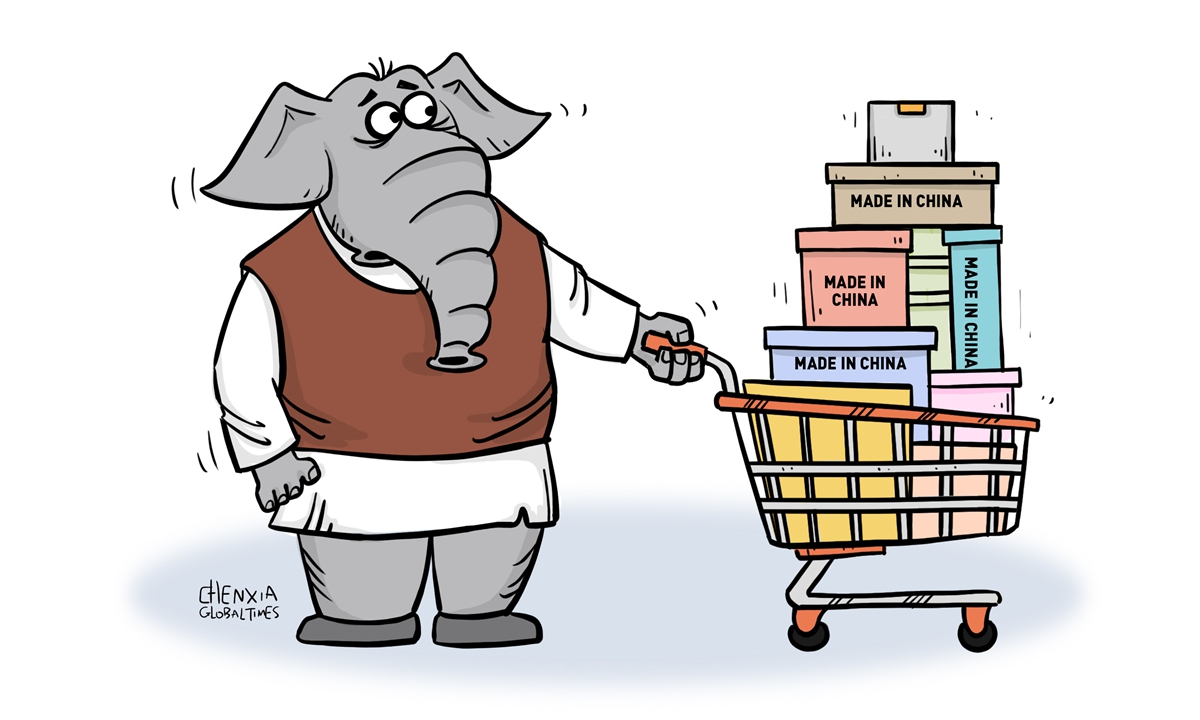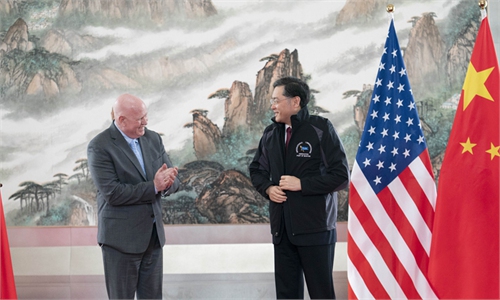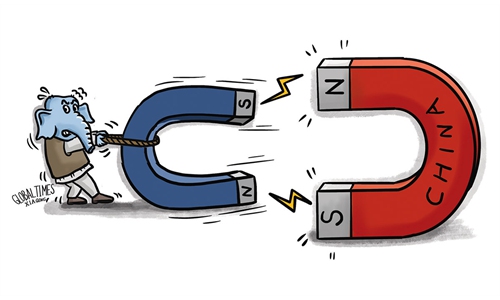COMMENTS / EXPERT ASSESSMENT
India’s long-term economic development needs made-in-China products

Illustration: Chen Xia/GT
As bilateral trade between China and India hit a record high in 2021, Indian media reported that India has seen deepening dependency on many crucial imports from China, from finished to intermediate goods.
India imported 8,455 different types of items from China between January and November in 2021, "a staggeringly diverse list covering everything from a range of chemicals and electronics to auto components and textiles, 4,591 showed an increase" The Hindu reported, citing data from India's Ministry of Commerce.
Besides purchasing record amount of finished goods from China, India is "also relying on China for a range of intermediate industrial products, many of which cannot be sourced from elsewhere and are not made in India in sufficient quantities," the report said.
Clearly, trade ties between China and India are robust, even though New Delhi has once tried to decouple from China in economy links in the past months.
It showed that the strong economic complementarities between the two Asian emerging markets cannot be reversed by New Delhi's political posturing; and more importantly, the dependency of India on imports from China, objectively speaking, is not a bad thing for the South Asian economy.
In fact, products from China, including both finished and intermediate goods, can benefit India's economic development, especially over the long run.
China is the largest manufacturing hub in the world, offering quality products at competitive prices to global buyers, including Indian consumers who recorded a GDP per capita ranking of 144 out of 194 economies, according to data tracking platform StatisticsTimes.Com. By importing Chinese products at relatively lower prices, more Indian consumers' demands are being met, and the country has saved more foreign exchange reserve.
Meanwhile, the increased import of intermediate goods from China could boost India's export to third markets, and therefore, shore up India's manufacturing capability and elevate the nation's status amid the global industrial chain.
Though many people across the world maintain high expectation when it comes to India's economic growth and its manufacturing development, what cannot be ignored are multiple barriers facing by the country, from its long-standing protectionism, insufficient infrastructure, to unstable policy environment.
As both major emerging economies in the world, however, India and China have different economic structures and are now in different phases of industrialization. India's manufacturing sector accounted for only 13 percent of its GDP in 2020, registering barely any growth in years despite the Modi administration's Make-in-India campaign. By comparison, the proportion of manufacturing in Chinese economy stands at roughly 26 percent.
In this sense, the Make-in-India campaign does not necessarily need to compete or overtake Made-in-China in order to be successful. Instead, the two could realize win-win results by enhancing cooperation, not only by India purchasing intermediate goods from China, but also through cooperation across the regional value chain.
The broader context here is the industrial integration in the Asian region. China itself is a colossal market and an economy under industrial upgrading. The unrivalled size of middle-class in China is going to consume huge amounts of products from overseas and the country's industrial upgrading is leading to relocation of some of its low-end manufacturing capacity.
By enhancing economic links with China, India could seek to win more market share in the Chinese market; and at the same time, it could be better integrated into Asia's regional development.
Standing in its way of becoming an economic powerhouse, New Delhi's real problem is domestic protectionism and some Indian politicians' voices whipping up an anti-China atmosphere which is negatively impacting the government, rather than the purchasing from China which would benefit India's economic growth in the long run.
The author is an editor with the Global Times. bizopinion@globaltimes.com.cn



